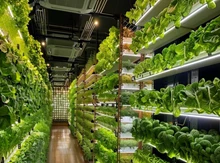
An applied conservation ecologist and biologist from the University of British Colombia stated that there are less profitable small regions within a field. She also added that she does not mean by the previous statement to identify large marginal landscapes.
She is pointing out the less productive lands inside a farm field and perhaps right across the boundaries of the farm field. She suggests that identification and removal of those areas can help in reducing farmers' losses and can even make their farms more profitable than before.
According to the ecologist, a technology that enables such kind precision farming is global positioning. Growers can use GPS to pinpoint their location in a field while the generator documents the production, allowing them to narrow down precise areas with low productive output.
Landowners can save money on fertilizers, labor, pesticides, fuel, and labor by preserving vegetation in fruitless regions, also while continuing to improve pollination, water quality, soil health, carbon storage, erosion control, pest control, and disease control.
Richard Pywell a researcher from the UK Center for Ecology and Hydrology, led a study. For the study, farmers formed pollinators and bird ecosystems across the edges and corners of the field. Afterward, the farmers eliminated up to 8% of the cropland from yield, however, they discovered that production was increased as much on the remaining farmland, partly thanks to enhanced pollination.
The study showed that the overall production of the farmland was increased with the plantings. Even after discarding approximately 8% of land from yield, they jointly increased production to a point in which there was no difference in the overall outcome. Furthermore, there was no significant disparity in profits between the treatments.











